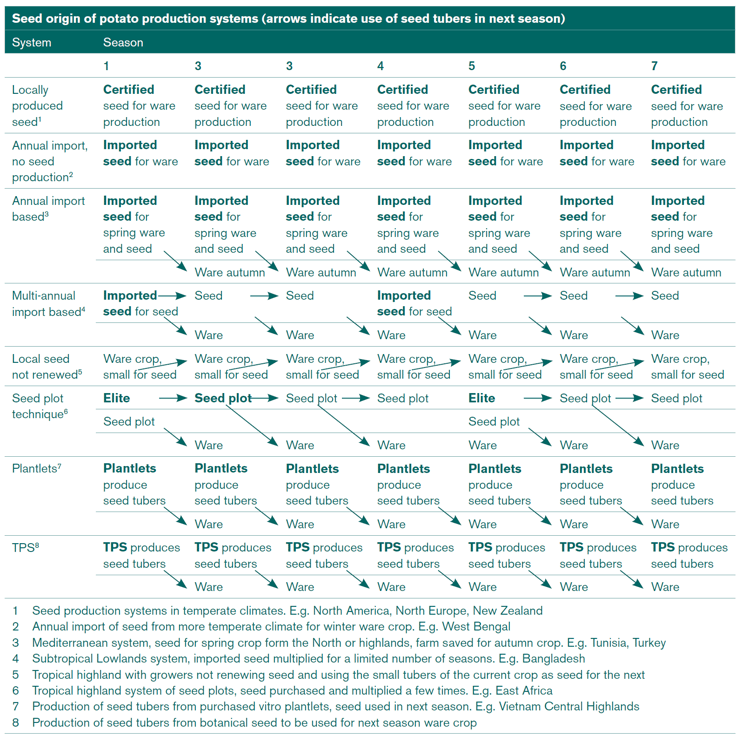The provenance of seed for potato planting is situation-dependent. In temperate climates with cool summers, certified seed is usually grown in the same region as the ware crops. Closer to the equator with spring crops or winter crops, seed is imported annually from temperate regions with the most suitable seed-growing conditions such as from the growing regions in Scandinavia, the Netherlands, Scotland and maritime France in Europe, or Mediterranean regions and the Middle East. Canada supplies Mexico and Central America, North Chinese Heilongjiang seeds go to Fujian at the South-East coast and Tasmanian seeds go to continental Australia.
Where there is an autumn crop, seed for that crop necessarily is produced locally from the seed import based spring crop. This is because there is no imported sprouted seed available at the time of planting as it coincides with the harvest time of the seed in the seed growing region. It is still dormant and needs a couple of months to sprout and be ready to plant.
Multiplying imorted seed
Some countries with not too high a degeneration rate multiply imported seed from Northern Europe for a few times. Such countries like Vietnam and Bangladesh only import part of their seed need and store locally produced seed in cold stores for up to nine months. In tropical highlands such as sub-Saharan Africa, North Chile and South China, farmers grow ware potato crops and use the small ones for the next crop. In some of these areas where governmental and non-governmental organizations supply limited amounts of healthy seed from an in vitro multiplication system, some growers apply a seed plot technique. In the Central Highlands of Vietnam growers buy rooted plantlets from in vitro and cuttings to grow seed for the next season, a unique type of seed plot technique.

Want to keep reading about the potato crop and provenance of seed tubers?
Our Potato handbook is a global potato university in 1 book!
Buy your copy today and get a one-year free subscription to PotatoWorld magazine.

